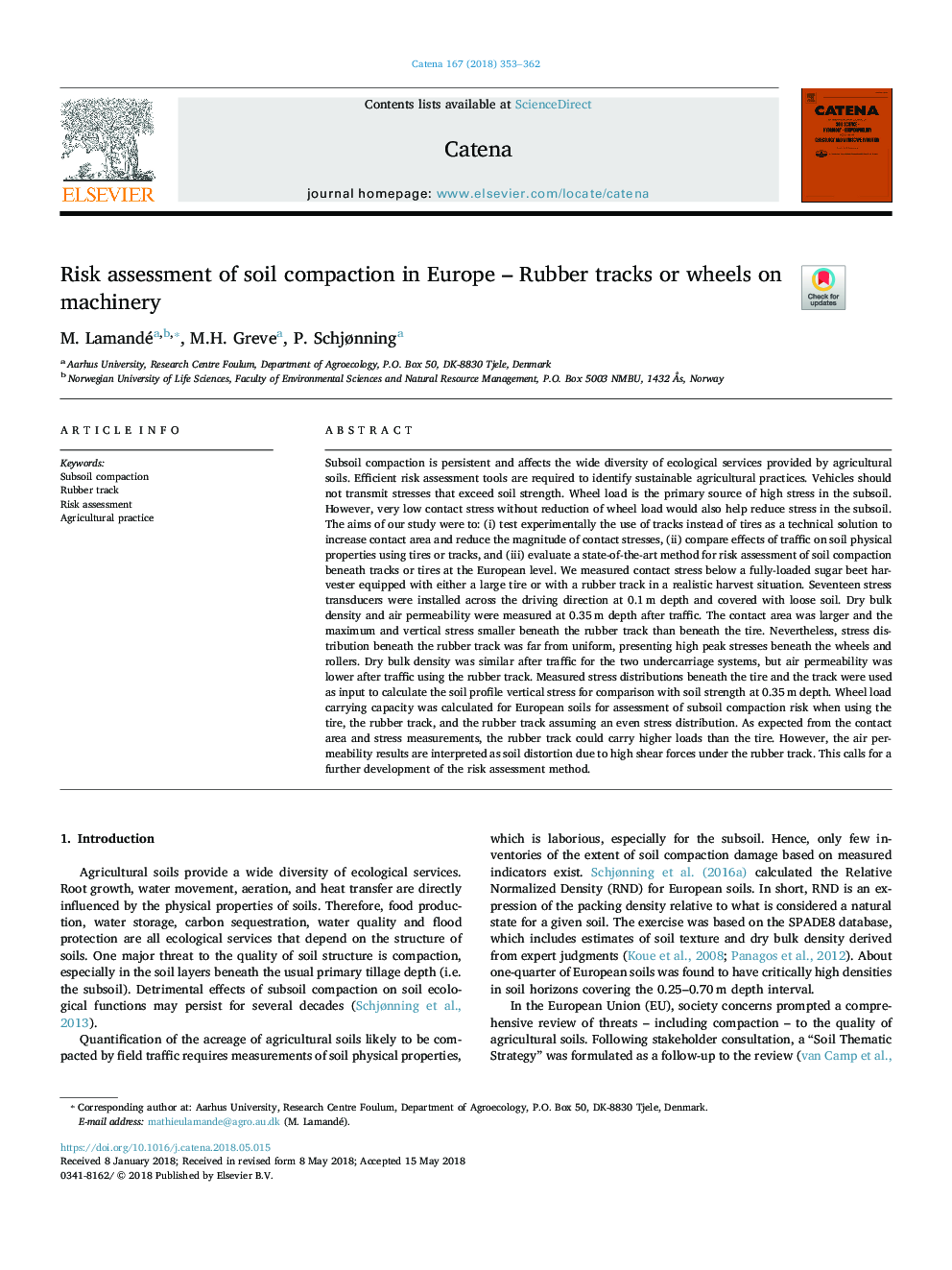| Article ID | Journal | Published Year | Pages | File Type |
|---|---|---|---|---|
| 8893498 | CATENA | 2018 | 10 Pages |
Abstract
Subsoil compaction is persistent and affects the wide diversity of ecological services provided by agricultural soils. Efficient risk assessment tools are required to identify sustainable agricultural practices. Vehicles should not transmit stresses that exceed soil strength. Wheel load is the primary source of high stress in the subsoil. However, very low contact stress without reduction of wheel load would also help reduce stress in the subsoil. The aims of our study were to: (i) test experimentally the use of tracks instead of tires as a technical solution to increase contact area and reduce the magnitude of contact stresses, (ii) compare effects of traffic on soil physical properties using tires or tracks, and (iii) evaluate a state-of-the-art method for risk assessment of soil compaction beneath tracks or tires at the European level. We measured contact stress below a fully-loaded sugar beet harvester equipped with either a large tire or with a rubber track in a realistic harvest situation. Seventeen stress transducers were installed across the driving direction at 0.1â¯m depth and covered with loose soil. Dry bulk density and air permeability were measured at 0.35â¯m depth after traffic. The contact area was larger and the maximum and vertical stress smaller beneath the rubber track than beneath the tire. Nevertheless, stress distribution beneath the rubber track was far from uniform, presenting high peak stresses beneath the wheels and rollers. Dry bulk density was similar after traffic for the two undercarriage systems, but air permeability was lower after traffic using the rubber track. Measured stress distributions beneath the tire and the track were used as input to calculate the soil profile vertical stress for comparison with soil strength at 0.35â¯m depth. Wheel load carrying capacity was calculated for European soils for assessment of subsoil compaction risk when using the tire, the rubber track, and the rubber track assuming an even stress distribution. As expected from the contact area and stress measurements, the rubber track could carry higher loads than the tire. However, the air permeability results are interpreted as soil distortion due to high shear forces under the rubber track. This calls for a further development of the risk assessment method.
Related Topics
Physical Sciences and Engineering
Earth and Planetary Sciences
Earth-Surface Processes
Authors
M. Lamandé, M.H. Greve, P. Schjønning,
